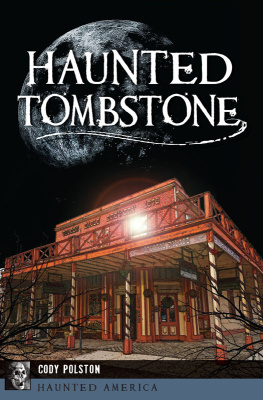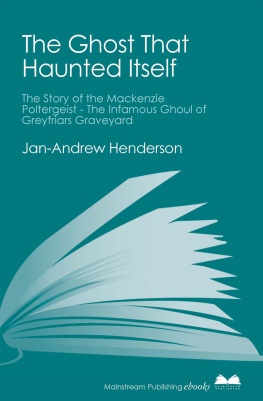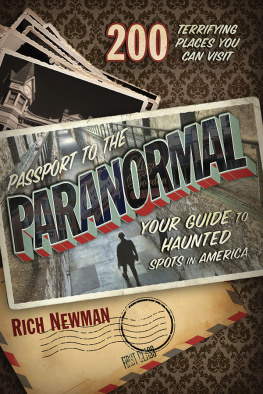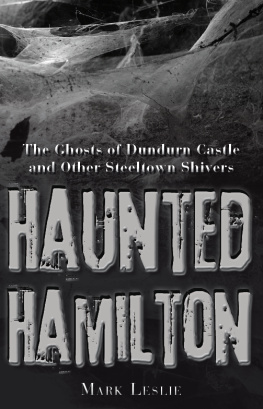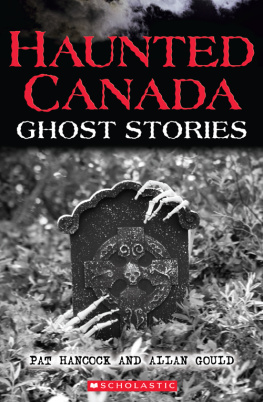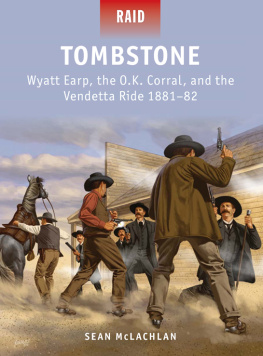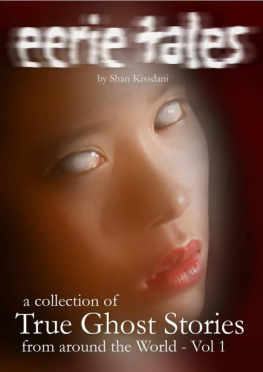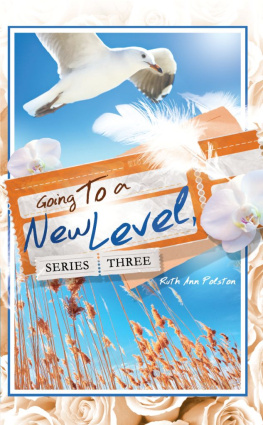


Published by Haunted America
A Division of The History Press
Charleston, SC
www.historypress.com
Copyright 2018 by Cody Polston
All rights reserved
First published 2018
e-book edition 2018
ISBN 978.1.43966.525.1
Library of Congress Control Number: 2018942450
print edition ISBN 978.1.46713.971.7
Notice: The information in this book is true and complete to the best of our knowledge. It is offered without guarantee on the part of the author or The History Press. The author and The History Press disclaim all liability in connection with the use of this book.
All rights reserved. No part of this book may be reproduced or transmitted in any form whatsoever without prior written permission from the publisher except in the case of brief quotations embodied in critical articles and reviews.
CONTENTS
PREFACE
Perhaps you have heard some of the ghost stories of hauntings in Tombstone. Like so many other places in the Wild West with violent histories, Tombstone is said to be one of the most haunted towns in the state.
However, there is a distinct difference between a ghost story and a personal paranormal experience. Usually, ghost stories are nothing more than that, stories. Told with enthusiasm and exhilaration, they are viewed as a form of entertainment and considered acceptable in that way. Each tale has a central character and follows the typical three-act structure indicative of storytelling.
On the other hand, personal experiences usually lack a beginning and end. They are brief personal narratives of some observed phenomenon that often has an element of mystery to the narrator.
These narratives almost always start with a disclaimer and end with the narrators voice trailing off, followed by yet another disclaimer. They are told reluctantly and with an apology. Personal experiences are often considered to be the delusions of a troubled mind, and the narrators of personal experiences are conscious of the potential for being judged as nonsensical. As a result, they assume a position that anticipates the dismissal of their observations and conclusions.
The narratives contradict some academic assumptions that the belief in ghosts is caused by various kinds of error, impaired reasoning or poor observation on the part of narrators. While this may be true in many cases, it is much more complicated than that. Each narrative adds information on the accumulation and determination of evidential criteria. This, in turn, opens up the interpretation of the sum of all the narrative events for discussion. The sense used here is similar to the legal definition from Bouviers Law Dictionary, which defines evidence as that which tends to prove or disprove any matter in question or to influence the belief respecting it. Belief is produced by the consideration of something presented to the mind. The issue thus presented, in whatever shape it may come, and through whatever material it is derived, is evidence of a sort, even if it is anecdotal. The goal of this book is to preserve some of these narratives and share some of the fascinating histories of the town too tough to die. Whether you are reading it for entertainment or using it as a source for research, I hope that you find the information that is presented useful and informative.
There are several individuals I need to acknowledge for their contributions to this book. The first is Rich Donovan and his group, Ghost Patrol with Donovan.
Ghost Patrol with Donovan started in 2001 as a one-off radio show on KRQ in Tucson, Arizona. Rich Donovan worked at KRQ as a DJ and assisted with production for the station. Once it aired, a longtime friend and producer, Polo, suggested that they do the ghost hunts for real. After a lot of investigation and research, Donovan and Polo got in touch with the Southwest Ghost Hunters Association and myself, and they learned the techniques for proper ghost hunting.
Since then, Ghost Patrol with Donovan became more than a one-time show on KRQ. The group has investigated over two hundred different locations. However, they are not paranormal investigators or paranormal specialists. Instead, the team consists of audio specialists, photographers and videographers who have come together with a desire to learn the history and character of the places they have visited. They have a mutual sense of adventure and curiosity for the unknown and created their team of investigators who just want to have fun in some of the areas creepiest locations looking for ghosts and trying to record it on some of todays technology. Ghost Patrol with Donovan is still a radio show, and every year in October, Donovan airs the audio from hunts done throughout the year on 100.9 K101 in Sierra Vista, Arizona. I am still involved with the Ghost Patrol to this day, and Donovans contributions to the material contained in this book are significant.
I am also grateful to Joshua Hawley and his team, Tombstone Ghost Hunters. Their insightful investigations of Tombstones haunted places are a wealth of information and significantly contributed to the accumulated knowledge of the paranormal occurrences that have been reported in the town of Tombstone. Joshua is also an author, and if you like this book, I would highly suggest picking up a copy of his work Tombstones Most Haunted.
INTRODUCTION
The lands in southeast Arizona were isolated and among the last to be developed by American settlement. These were the lands of the fierce Apache tribes. After the death of Cochise in 1874, there was no clear succession of leadership. This made the Apache more rapacious and created severe hazards for any settlers who entered the area.
Because of this, when Ed Schieffelin decided to prospect in the San Pedro Valley in 1877, he used Brunckows Cabin as a base of operations to survey the country. After many months, while working the hills east of the San Pedro River, he found pieces of silver ore in a dry wash on a high plateau called Goose Flats. It took him several more months to locate the source. When he found the vein, he estimated it to be fifty feet long and twelve inches wide. Schieffelins legal mining claim was sited near Scott Lenoxs grave site, and on September 21, 1877, Schieffelin filed his first claim and logically named his stake Tombstone. The name came to mean much more for those notorious and nameless who died there and are laid in Boot Hill.
When the first claims were filed, the initial settlement of tents and wooden shacks was located at Watervale, near the Lucky Cuss mine, with a population of about one hundred. Schieffelin, his brother Al and Richard Gird, their mining engineer partner, eventually brought in two significant strikes, the Toughnut and the Lucky Cuss. Schieffelin also owned a piece of Hank Williams and John Olivers Grand Central, which they called the Contention. The San Pedro Valley quickly became a mining bonanza.
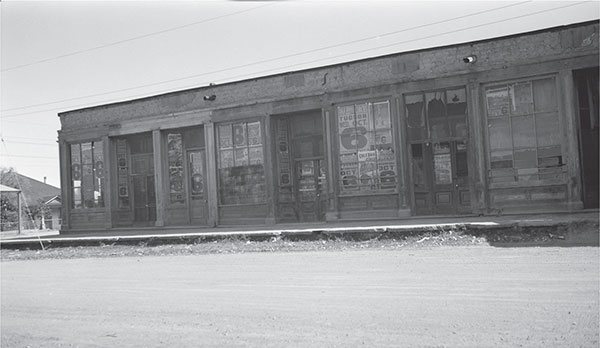
Storefront on West Allen Street, 1933. Library of Congress.
Ironically, hard-rock mining was the antithesis of the American western dream, for the minerals required substantial capital and company organization to get the ore out. Former territorial governor Anson P.K. Safford offered to find the financial backing for a cut of the strike, and so the Tombstone Mining and Milling Company was formed to build a stamping mill. While the mill was undergoing construction, U.S. Deputy Mineral Surveyor Solon M. Allis finished surveying the site of the new town, which was made public on March 5, 1879. The tents and shacks near the Lucky Cuss were moved to the new town site on Goose Flats, a mesa above the Toughnut Mine broad enough to hold a growing town. Lots were sold on Allen Street for five dollars each. The town rapidly had some forty cabins and just over one hundred residents. At the towns founding in March 1879, it took its name from Schieffelins first mining claim. By fall 1879, several thousand souls were living in a canvas and matchstick camp perched above the richest silver strike in the Arizona Territory.
Next page
